2016 Chevrolet Camaro: First Drive

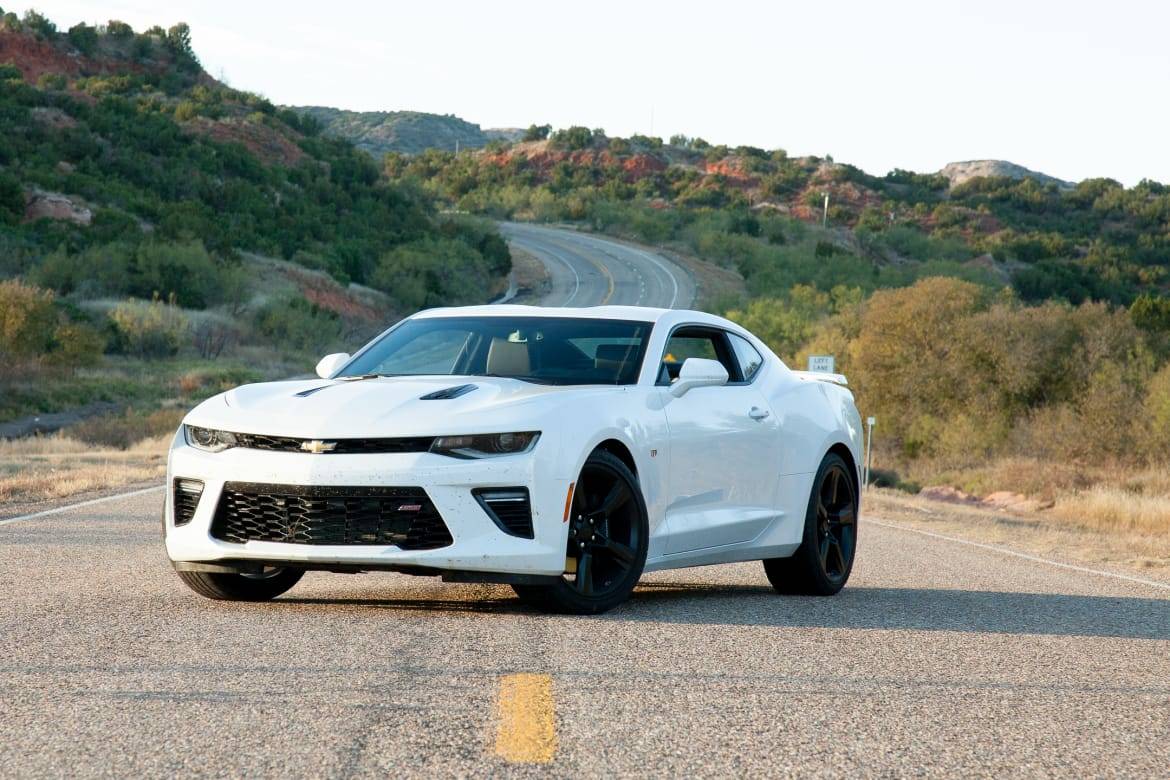
Don’t let the similar exterior shape fool you: the redesigned 2016 Chevrolet Camaro’s transformation is huge, and it ups the Camaro’s driving game in a big way. More than ever, the 2016 Camaro SS can be likened to a four-seat Chevrolet Corvette thanks to an all-new weight-reducing, rigidity-enhancing platform and heightened driving dynamics, plus a slathering of tech goodies and features found in the Corvette itself.
Related: Read More About the 2016 Chevrolet Camaro
I racked up 900 miles in an SS coupe with a six-speed manual transmission driving from Dallas to Albuquerque, N.M.; a bore if you take the direct route, but we found a number of interesting roads to showcase the Camaro’s extensive changes. The 455-horsepower, V-8-powered SS sits at the top of the current Camaro lineup above the 335-hp, V-6-powered LT. A 275-hp, turbocharged four-cylinder becomes available in early 2016.
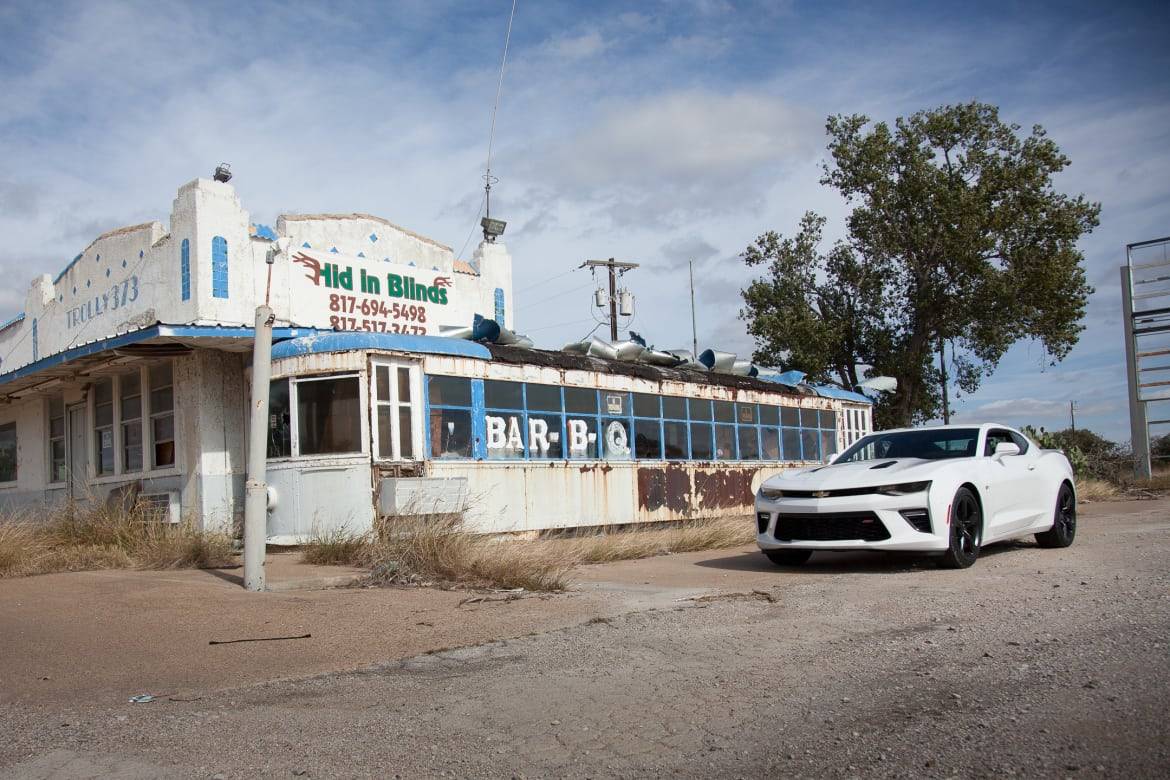
Exterior & Styling
The Camaro’s new styling is not one of those attention-grabbing shapes, at least according to the people we encountered from Dallas to Albuquerque. They didn’t turn a head at the car except for one 2015 Corvette driver who gave us an enthusiastic thumbs-up. That’s not a huge surprise considering the Camaro’s shape is similar to that of the outgoing car, despite a smaller footprint: 2.3 inches shorter from bumper to bumper, 0.8 inch narrower and 1.1 inches shorter at the roof.
Our coupe test car looked good in white, though I’m finding black-painted wheels pass‚; I mean, there’s a minivan out there with a black wheel package. The Camaro’s optional five-split-spoke 20-inch silver-painted wheels are less boy-racer looking and far more appropriate for the Camaro’s new sporting character.
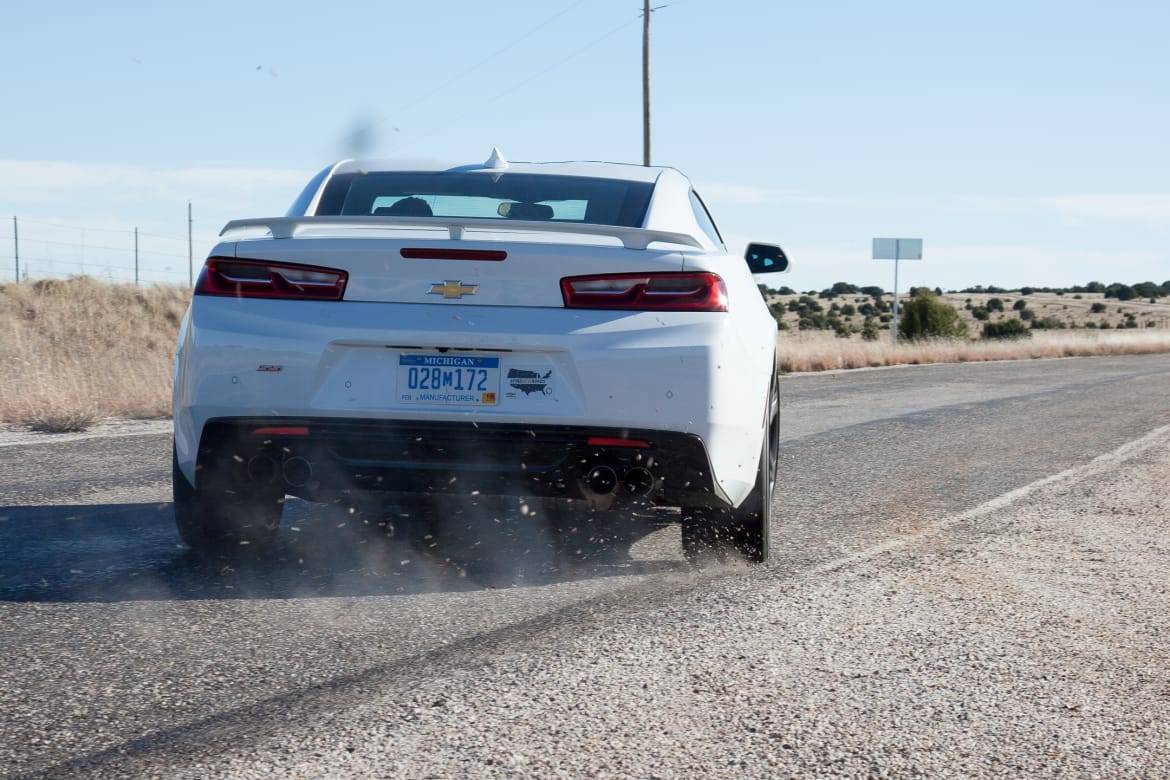
How It Drives
Later years of the previous-generation Camaro used trick suspensions and chassis tuning in high-performance 1LE, ZL1 and Z/28 trims to manage the Camaro’s hefty curb weight extraordinarily well. The all-new SS is 223 pounds lighter than the old SS (3,908 versus 3,685 pounds), and picks up where those high-performance packages left off with a lighter, more rigid chassis complementing the newly available Magnetic Ride Control adaptive suspension ($1,695). The system, which automatically adjusts shock absorber firmness to match road conditions, was previously on the Camaro in ZL1 trim only. Compare the old Camaro to the new one here.
The 2016 Camaro flat-out drives like a special performance package car instead of a “regular” SS when optioned with the seemingly magical suspension. The previous SS wasn’t especially engaging to drive without the 1LE handling package or more extreme ZL1 or Z/28, so I’m thrilled that the new SS starts at that point with the addition of the MRC suspension. It’s not hard to believe Chevrolet’s claim that the 2016 SS clicks off faster lap times than the outgoing 1LE.
The SS is tight, responsive and has an aggressive vigor at the first flick of the steering wheel to dart into a corner. Keep turning the steering wheel and there’s minimal body lean while the car tracks through the turn with little fuss and a whole lot of rewarding grip. Camaro competitors, the Dodge Challenger and Ford Mustang, have optional performance packages like the Challenger’s R/T Scat Pack and Mustang GT’s Performance Pack, but neither handles as confidently as the Camaro. Compare the new Camaro with the Mustang and Challenger here.
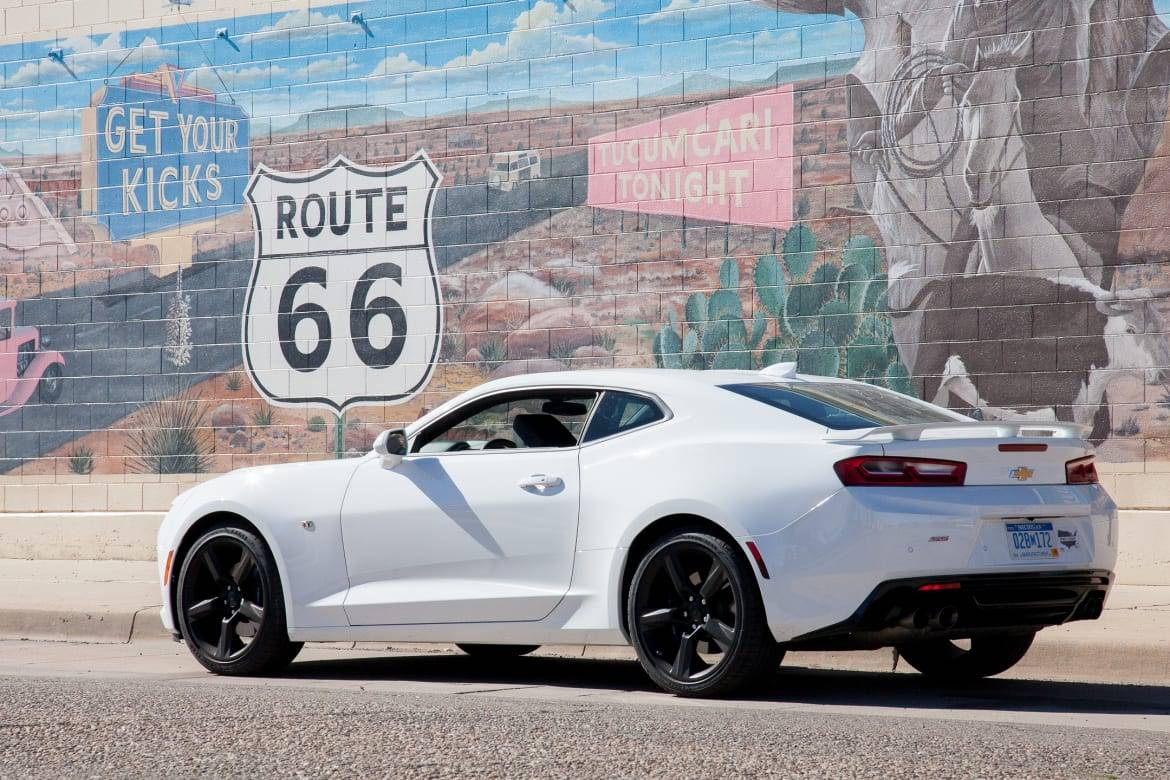
Complementing the Camaro SS’ handling prowess perfectly is the all-new 455-hp V-8 for both manual and automatic transmission cars, up from 426 hp for the previous manual transmission and 400 hp from the previous automatic. First used in the 2015 Corvette, the 6.2-liter V-8 in the Camaro provides ample power from the basement of the power band up to redline. Like the Corvette, multiple driving modes make their way into the SS for 2016 and are the key to unlocking the Camaro’s multiple personalities through the adjustable exhaust, steering, engine responsiveness, suspension and transmission (on automatic cars).
The six-speed manual’s only adjustability is with the Active Rev Matching feature that blips the throttle to match engine speed with transmission speed on downshifts, a feature I never turned off for the duration of the trip. It replaces heel-and-toe downshifting and may be the lazy way out, but I’ll take it. I just wish it would stay activated; you have to turn it on through the steering-wheel paddles (like the Corvette) at each startup.
Tour mode turned our Camaro into a surprisingly comfortable road-tripper with a suspension that’s not overly firm and still absorbs bumps cleanly. Track mode firms up the suspension to filling-rattling rigidity and is the go-to for twisties, but you don’t want to keep it there too long for your back’s sake. Texas roads may be smooth, but many weren’t quiet, as some roads’ gritty texture produced hellacious noises inside the cabin. On other roads, however, the Camaro was whisper quiet at speed with minimal road and wind noise; it will be hard to say, really, what’s the road’s fault or the Camaro’s until I drive the car on familiar roads.
One thing you get to hear plenty of — in a good way — is the engine with the optional dual-mode performance exhaust that uncorks the V-8’s noises with an electronically controlled exhaust valve. It’s a must-have feature for $895. While a version was available on the previous Camaro, this go-around it’s even better because it’s tied to the driving modes and is even adjustable independently, so you can pair a comfortable suspension setting with the most aggressive exhaust. In Track mode, the 6.2-liter makes a satisfying “brrrrrrrrrr,” which just tickles me at every gear change, as the engine revs drop between upshifts. About 95 percent of my driving was with the exhaust in the most aggressive mode.
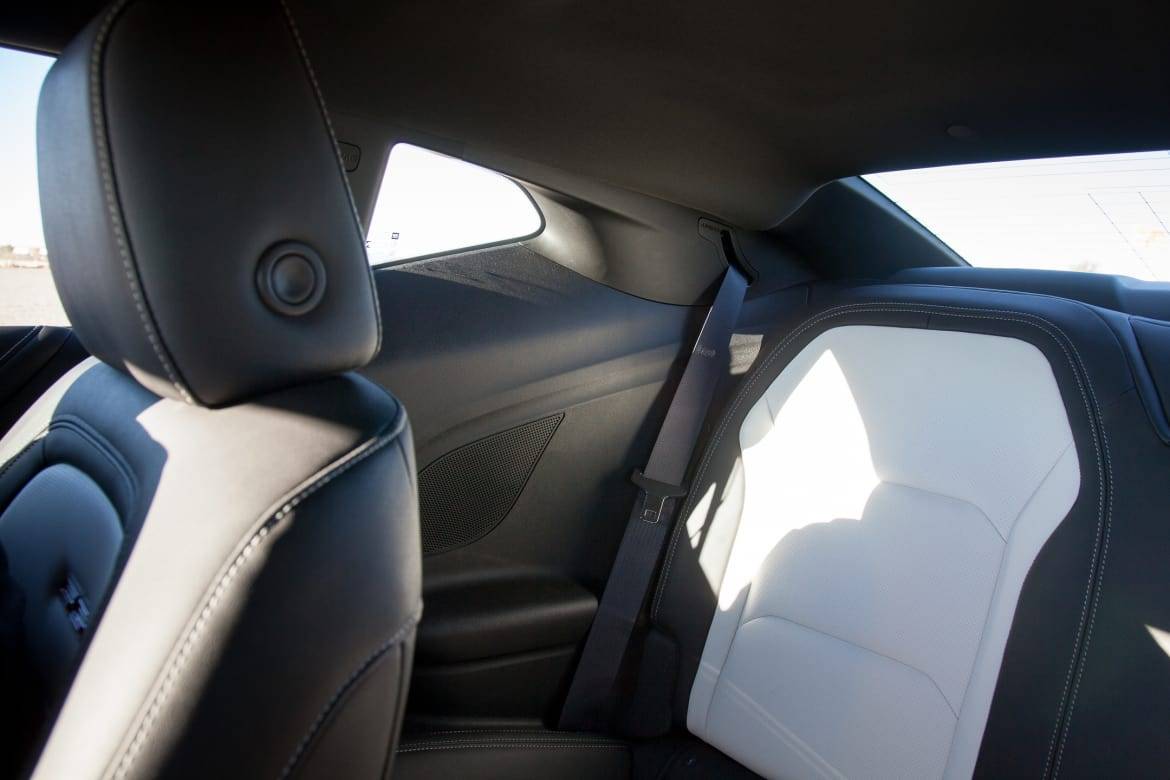
Interior
Those hoping for better visibility from the notoriously cave-like Camaro will be disappointed with the 2016. In fact, rearward visibility might be worse than before with what seem like smaller rear-quarter windows. There’s a workaround, however, in that blind spot monitoring, rear cross-traffic alert and a backup camera with a large display and predictive lines are available on the SS. No other car could benefit from these features as much as the visibility-challenged Camaro. All the features provide confidence to drive the Camaro worry-free, but the cost of entry is high: Blind spot monitoring and the rear cross-traffic alert are available only on the $42,295 2SS, an upgrade over the standard $37,295 1SS, though the backup camera is standard. All prices include a destination fee.
The interior has its share of interesting gadgets. Most notable is the standard Apple CarPlay integration that floored me with how useful and seamless it worked over a 900-mile trip. Streaming music applications on my phone as well as hands-free voice and text messaging worked flawlessly; there’s no Chevrolet-specific app to download like some automakers force you to do (HondaLink), no convoluted Bluetooth pairing procedure — just plug in the phone and you’re good to go.
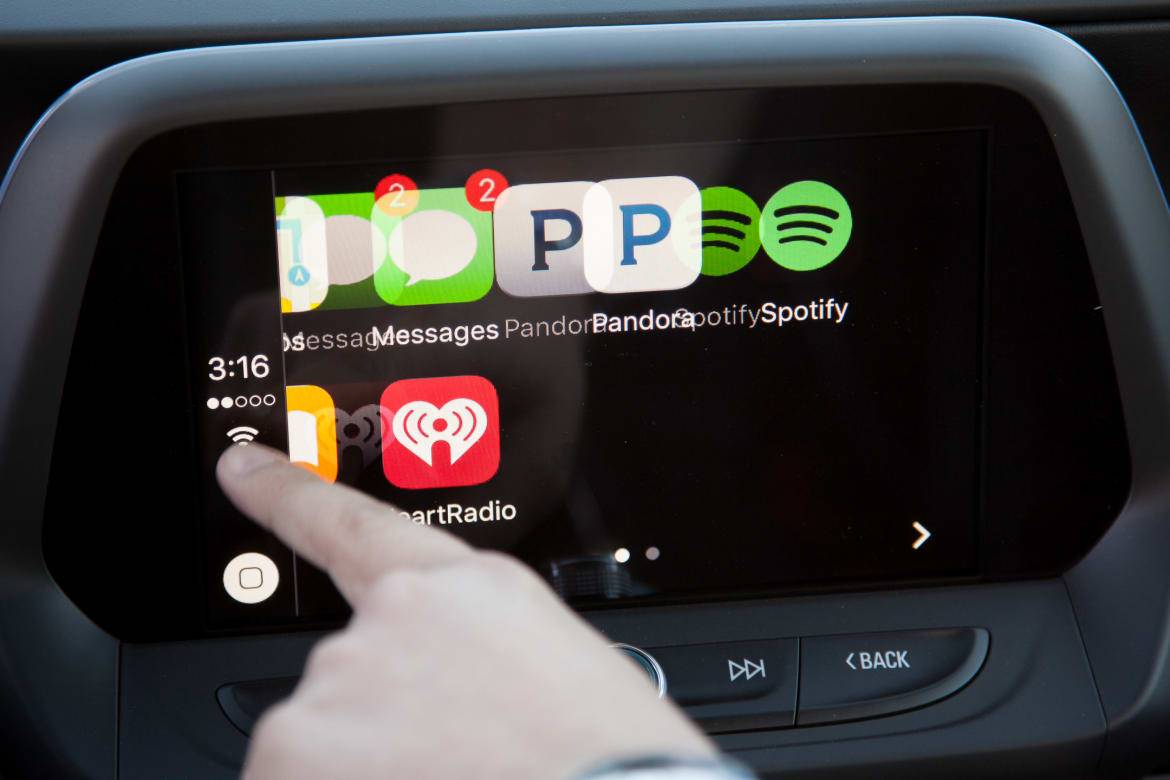
Apple CarPlay and the Camaro’s built-in standard 4G LTE connectivity and Wi-Fi provide a one-two punch for road-trip media. The car’s stronger receiver and rooftop antenna received data out in the boonies where my phone couldn’t, and through the Wi-Fi we were able to stream music even in rural areas – via the phone-based apps and then on to the stereo. The signal proved strong enough in more reception-friendly areas for my co-pilot to video chat with his family.
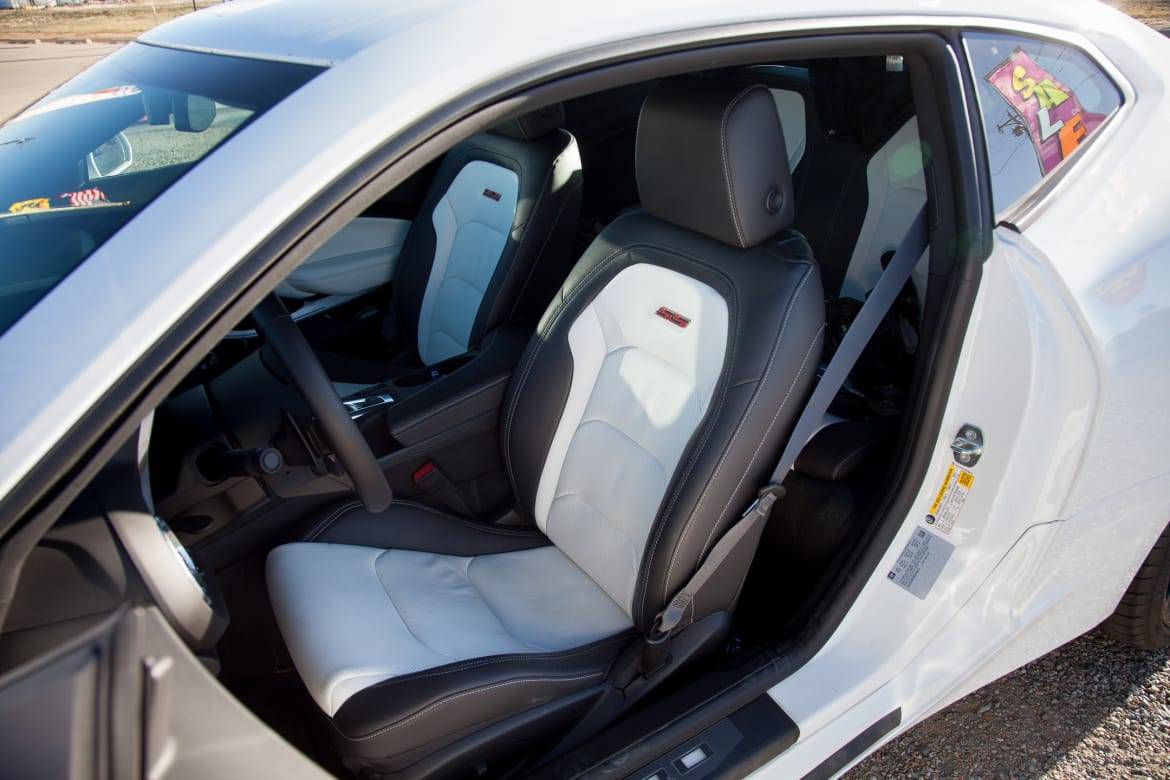
Our lengthy trip also put front-seat comfort to the test; it passed with flying colors for my easily tweaked back and for my passenger. I didn’t think the Camaro was going to be that proficient of a road-trip car considering its poor visibility and small trunk (now smaller than before, down to 9.1 cubic feet from 11.3 cubic feet), but it proved enough for two people’s luggage and the multimedia gear we carried.
Most of all, the Camaro is thoroughly entertaining to drive and perfectly livable on long drives when equipped with the new magnetic suspension and standard adjustable driving modes. You can actively seek curvy, fun roads in Track mode, have a riot and then comfortably drive down the highway to the next destination in Tour mode. That type of dual character, executed as well as in the Camaro, often comes in much pricier sports cars. The Camaro isn’t cheap, though, with an as-tested price of $46,080. More than $45,000 for this type of sports coupe isn’t unheard of in the segment; the last Mustang GT we tested was $45,885, and the previous Challenger R/T Scat Pack was $46,165. One thing’s for sure: Both of those have their work cut out for them with the 2016 Camaro prowling the streets.

Managing Editor Joe Bruzek’s 22 years of automotive experience doesn’t count the lifelong obsession that started as a kid admiring his dad’s 1964 Chevrolet Corvette — and continues to this day. Joe’s been an automotive journalist with Cars.com for 16 years, writing shopper-focused car reviews, news and research content. As Managing Editor, one of his favorite areas of focus is helping shoppers understand electric cars and how to determine whether going electric is right for them. In his free time, Joe maintains a love-hate relationship with his 1998 Pontiac Firebird Trans Am that he wishes would fix itself. LinkedIn: https://www.linkedin.com/in/joe-bruzek-2699b41b/
Featured stories




